Understanding Medicaid Waivers and Their Benefits
Medicaid waiver programs are vital tools in providing tailored, community-based healthcare services that support children and elderly adults with complex health needs. These programs allow individuals to live independently, avoid unnecessary institutionalization, and receive specialized care suited to their unique conditions. By understanding how these waivers operate, their scope, eligibility, and the services offered, families, caregivers, and policymakers can better appreciate their crucial role in promoting health, safety, and quality of life.
Support for Healthcare Needs Through Community-Based Services
How do Medicaid waiver programs support the healthcare needs of children and elderly adults?
Medicaid waiver programs play a vital role in addressing the healthcare needs of both children and older adults by offering a range of community-centered services tailored to their unique circumstances. These programs enable individuals to remain in their homes or community settings instead of institutional facilities such as nursing homes or hospitals.
For children with disabilities, specialized waivers like the Family Supports Waiver provide essential services that are non-residential. These services include therapy, behavioral interventions, respite care, assistive technology, and support for developmental needs. Such supports help children access appropriate care within familiar environments, promoting stability and comfort.
Elderly adults and those with disabilities benefit from an array of services designed to support aging in place. This includes home health care, personal support services, home modifications, transportation, and adult day care. Programs also provide case management to coordinate various aspects of medical and support services, ensuring comprehensive care tailored to complex health conditions.
Additionally, services like emergency response systems, medical equipment, and habilitation programs further contribute to enabling independence and safety. The inclusion of behavioral support and mental health services helps address mental health needs alongside physical health.
Many of these programs incorporate consumer-directed care options, allowing beneficiaries to hire and manage their caregivers, including family members or spouses, thus offering greater control over their care plans. This flexibility enhances the quality of life for vulnerable populations by providing personalized, responsive support.
By providing these comprehensive services, Medicaid waivers significantly reduce the necessity for institutionalization. They support individuals’ ability to live independently, maintain community ties, and receive necessary medical and supportive care in the comfort of their homes.
Overall, Medicaid waiver programs are designed to meet the diverse healthcare needs of children and elderly adults, offering tailored services that improve health outcomes and quality of life while promoting community integration.
Broad Range of Services for Vulnerable Populations
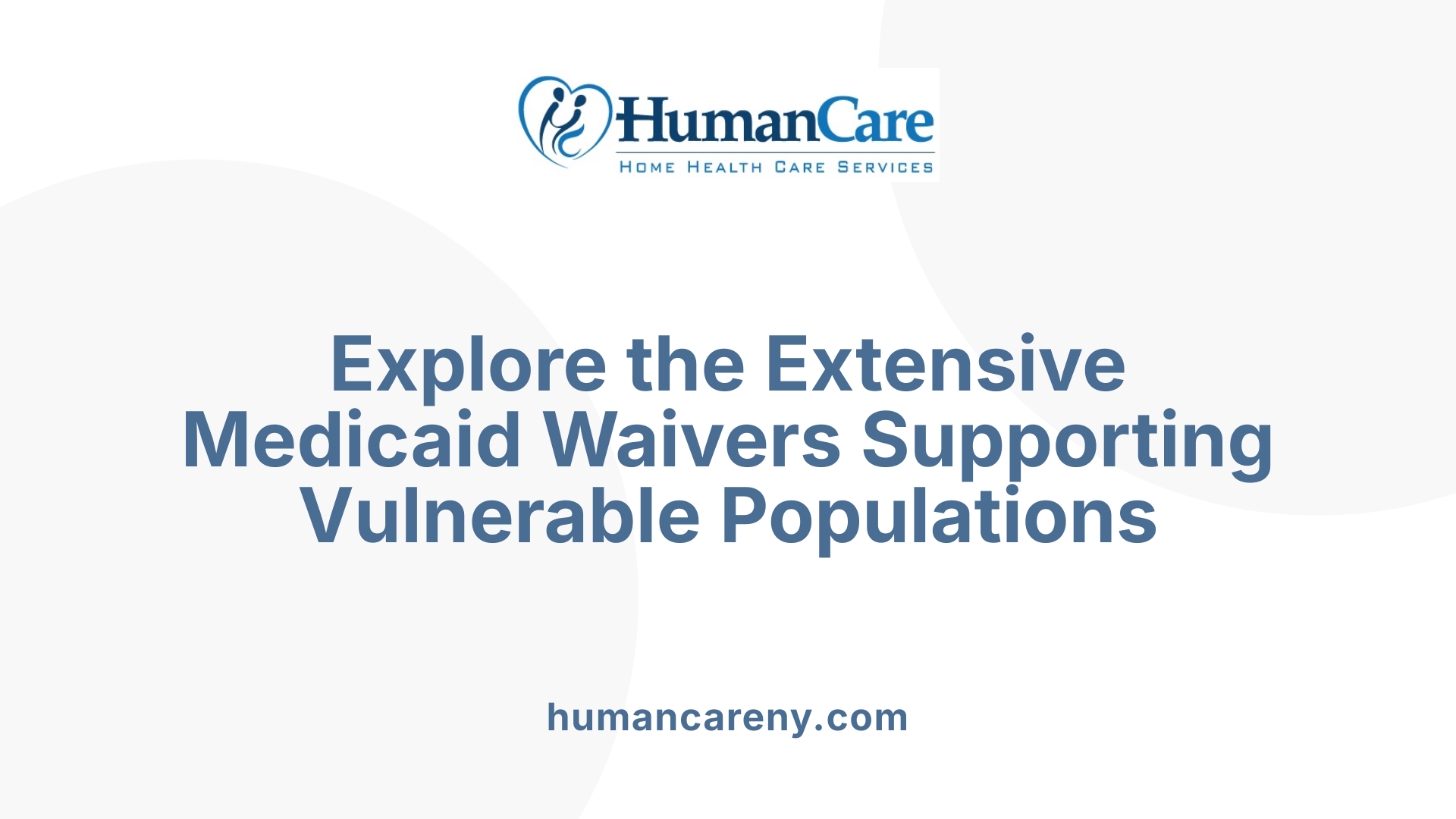
What services are provided through Medicaid waivers for children and elderly adults?
Medicaid waivers are instrumental in delivering a variety of long-term care services tailored to children and elderly adults who require assistance, enabling them to reside in their homes or community environments instead of institutional facilities. The core of these services revolves around Home and Community-Based Services (HCBS), which encompass an extensive array of support options.
For children, especially those with complex health needs or developmental disabilities, waivers often include services such as behavioral interventions, habilitation supports, community training, and specialized medical equipment. These programs help children access developmental care and prevent unnecessary institutionalization, promoting growth and stability within their families.
Elderly adults benefit from services designed to enhance independence and quality of life. Typical offerings include assistance with daily activities like bathing, dressing, and eating, as well as more medical-oriented services such as home health aides, medical equipment, and home modifications to improve safety.
Respite care is provided both for families and caregivers, allowing them temporary relief from caregiving duties. Adult day care services enable seniors to participate in social and therapeutic activities outside their homes, fostering connection and mental stimulation.
Transportation services are also a vital component, helping individuals reach medical appointments, grocery stores, and community centers. Meal delivery programs ensure proper nutrition, especially for those with limited mobility.
Rehabilitation therapies, including physical, occupational, and speech therapy, support recovery and maintain functional abilities. Supportive devices and assistive technology further enable individuals to perform daily tasks and manage medical conditions effectively.
Eligibility for these waivers generally requires demonstrating a need for care at a level comparable to that required in a nursing home and residing in a participating state. Each state shapes its waiver programs according to federal regulations and local needs, creating a broad spectrum of services aimed at keeping vulnerable populations safe, healthy, and engaged within their communities.
By providing these services, Medicaid waivers significantly reduce reliance on institutional care, improve health outcomes, and promote aging in place or living independently for children and elderly adults. These programs exemplify the commitment to supporting community-based living while addressing the unique needs of each individual.
Supporting Community Living and Long-Term Care
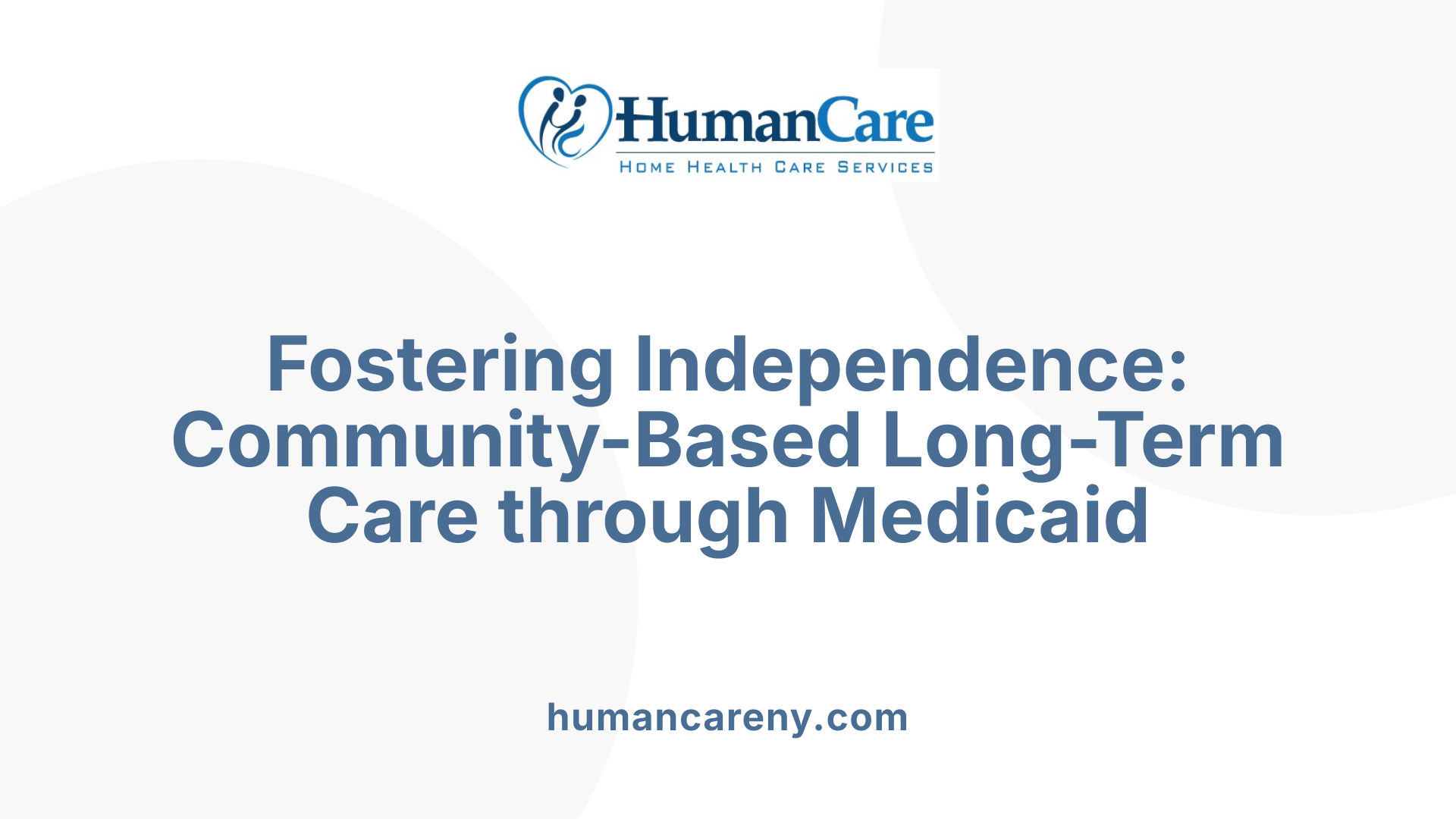
How do Medicaid waivers support community living and long-term care?
Medicaid waivers, especially those provided through Home and Community-Based Services (HCBS) programs, are instrumental in facilitating community living and extending long-term care options for many individuals. These waivers enable states to deliver a broad array of supportive services directly in the home or community, rather than in traditional institutional settings like nursing homes or hospitals.
Services often included are personal care assistance, home modifications to improve safety and independence, respite care for caregivers, adult day programs, and medical support such as home health aides and assistive devices. This comprehensive support helps individuals maintain their daily routines and live as independently as possible.
By providing alternatives that are often more cost-effective than institutional care, Medicaid waivers promote not just financial savings but also better health outcomes. They help reduce the likelihood of unnecessary hospitalizations and institutionalization, thus supporting aging in place—a priority for many elderly and disabled individuals.
Moreover, state-specific waiver programs allow for customization based on population needs. For example, some target seniors, others focus on children with developmental disabilities, and some serve individuals with complex medical needs like HIV/AIDS or brain injuries.
These programs also foster innovation by testing new models of care, which can lead to improvements across the entire Medicaid system. They often incorporate consumer-directed care options, giving recipients greater control in managing their care and choosing their caregivers—sometimes including family members or spouses.
Participation in Medicaid waivers, while beneficial, is not automatically guaranteed even for eligible individuals. There are enrollment caps and waiting lists, reflecting the demand for these services. Eligibility criteria typically include residency, financial need (with income and asset limits), and a functional assessment confirming a need for nursing facility-level care.
In summary, Medicaid waivers support community living by providing flexible, tailored, and cost-efficient services that enable vulnerable populations to stay in their homes and communities in safety and dignity. This approach not only enhances quality of life but also aligns with the broader goals of healthcare systems to deliver more person-centered, community-based care options.
Eligibility Criteria for Specific Populations
What are the eligibility criteria for Medicaid waiver programs targeting children and elderly populations?
Medicaid waiver programs designed for children and elderly individuals set specific eligibility standards to ensure that those who truly need community-based services can access them. These criteria typically include income and resource limits, functional assessments, and health conditions.
For most programs, applicants must meet Medicaid's general financial requirements. This often involves having an income that does not exceed a set percentage of the Federal Poverty Level (FPL) — commonly up to 300% of the Supplemental Security Income (SSI) rate for certain waivers. Assets such as savings, property, or other resources are usually capped; for example, an asset limit might be around $2,000.
Beyond financial eligibility, individuals must demonstrate a need for a specific level of care. This often involves meeting a nursing home level of care, which assesses the individual's ability to perform activities of daily living (ADLs) such as bathing, dressing, eating, and mobility. These assessments help determine whether community-based services will suffice or if institutional care is necessary.
For children, eligibility policies sometimes disregard parental income to prevent the family’s financial situation from limiting access. Children with developmental disabilities, autism, or traumatic brain injuries often qualify based on diagnosis, with state-specific criteria guiding these determinations.
Residents must usually reside within the state offering the waiver or be transitioning into a compliant community setting. An application process involves submitting detailed medical documentation, completing assessments, and securing approval from state Medicaid agencies.
Additional eligibility specifics may include age limits—such as being under 21 for certain children’s programs or 65 and older for elderly-focused waivers—and meeting criteria related to health status or diagnostic conditions.
Overall, these programs are designed to identify individuals who need community-based services to avoid institutionalization, support independent living, and improve health outcomes.
| Population Group | Typical Age Range | Medical / Functional Criteria | Income Limit | Asset Limit | Notes |
|---|---|---|---|---|---|
| Children | 0-21 | Developmental disabilities, traumatic brain injury, or other qualifying conditions | Up to 300% of SSI or state-specific threshold | ~$2,000 | Parental income often disregarded |
| Elderly | 65+ | Nursing home level of care, assistance with ADLs | Up to 300% of SSI or state-specific threshold | ~$2,000 | May include supports like personal care, home modifications |
This eligibility structure aims to make sure that the right individuals receive tailored supports needed to live in their community rather than in institutions.
Features and Scope for Different Age Groups
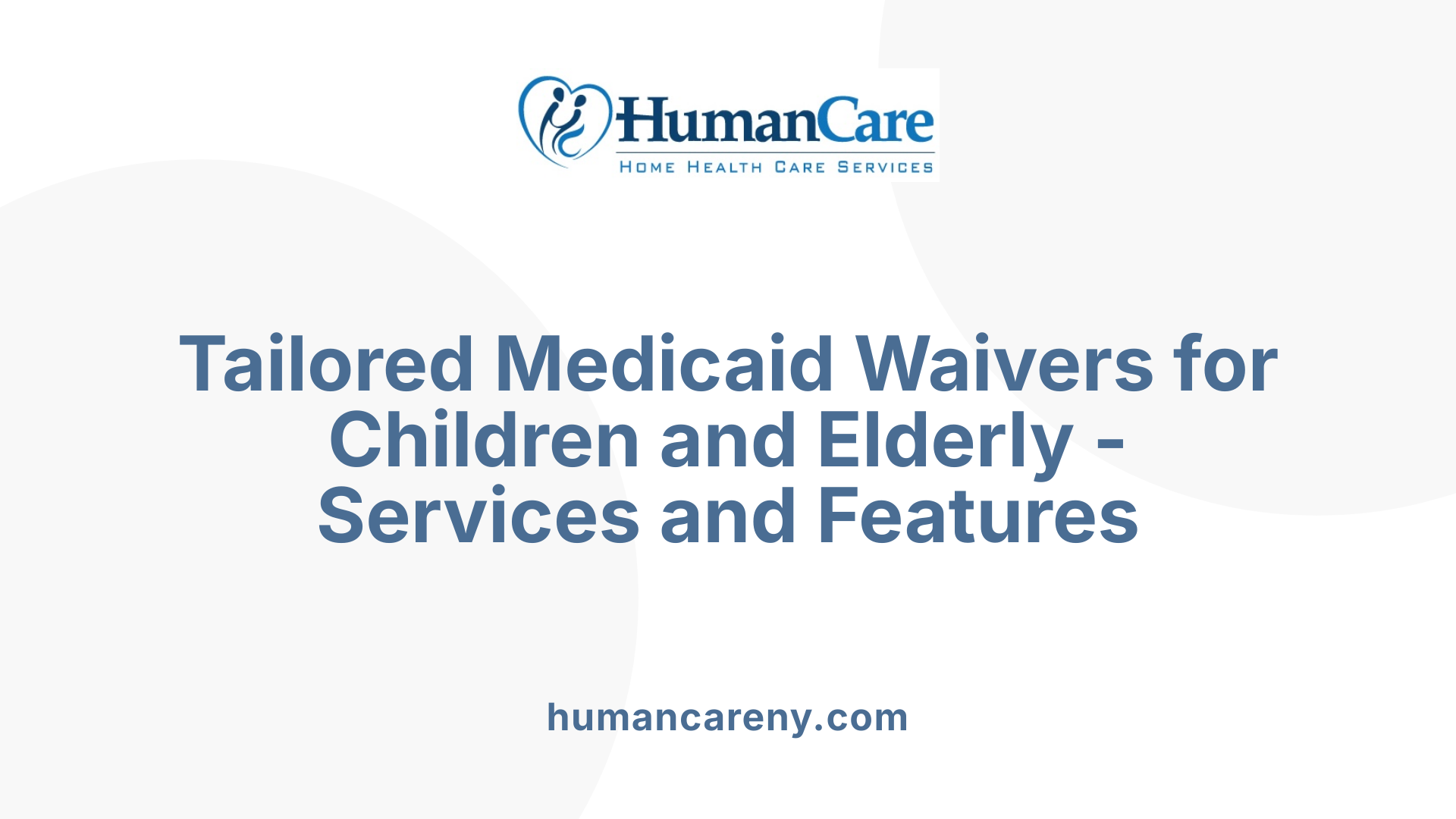
What features and scope do Medicaid waiver programs offer for specific age groups?
Medicaid waiver programs provide diverse services tailored to the unique needs of different age groups, aiming to support community living and reduce dependence on institutional care. These programs facilitate personalized healthcare solutions, ensuring individuals receive the help they need within their homes or local communities.
For older adults aged 60 and above, programs like Indiana’s PathWays for Aging Waiver are prominent examples. They typically include services such as personal care assistants, adult day care, respite services, home modifications, and transportation. These supports are designed to help seniors maintain independence, manage chronic conditions, and avoid unnecessary hospitalization or institutionalization.
In contrast, younger populations, notably children and adults with developmental disabilities or chronic health issues, benefit from distinct types of waivers. The Family Supports Waiver and Community Integration and Habilitation Waiver are structured to offer services like habilitation, behavioral supports, therapies (speech, occupational, physical), and environmental adaptations. These services help children and adults thrive within their homes while promoting social participation and skill development.
Eligibility for these programs often involves meeting specific medical or developmental criteria, such as requiring a level of care comparable to inpatient hospital or nursing home needs. Income limits are also typically applied, ensuring that assistance reaches those with limited financial resources.
Personalized care plans, often developed through a person-centered approach, are central to Medicaid waivers. This customization ensures that services directly align with each individual’s needs, preferences, and goals.
Overall, Medicaid waivers expand their scope and features according to the age and health needs of beneficiaries. Whether addressing the needs of seniors or supporting children with special health requirements, these programs enable tailored, community-based support that enhances quality of life and promotes aging in place.
Impact on Health Outcomes
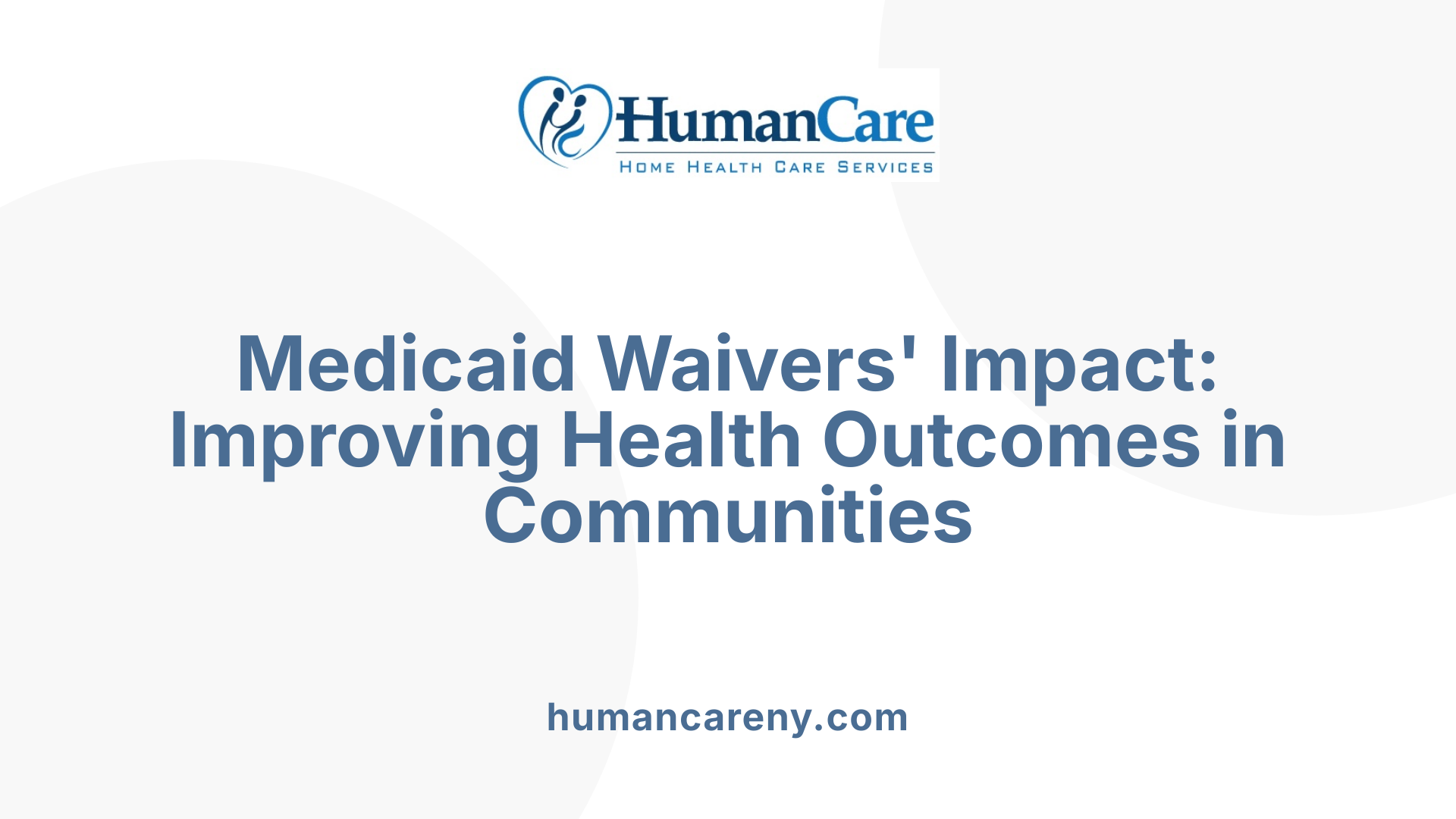
What is the impact of Medicaid waiver programs on health outcomes for children and elderly adults?
Medicaid waiver programs, particularly those involved with Home and Community-Based Services (HCBS), play a crucial role in improving health outcomes for both children and elderly populations. These programs are designed to provide personalized, community-oriented care that directly addresses the unique needs of individuals, reducing unnecessary hospitalizations and delaying or preventing institutionalization.
For children, especially those with developmental disabilities like Autism Spectrum Disorder (ASD) or intellectual disabilities, waivers enable access to specialized services such as behavioral therapy, habilitation, and family support. These services contribute to better developmental progress, healthier family environments, and greater independence. Additionally, waivers that offer support like respite care and home modifications help reduce caregiver stress and allow families to better manage ongoing health needs.
Elderly adults benefit significantly from Medicaid waivers through services that promote aging in place. These include personal care, home health aides, emergency response systems, and assistive devices. Such services help seniors maintain their independence, improve their quality of life, and reduce the risk of hospitalization and long-term institutional care.
An example of impactful programs is Pennsylvania’s 'Keystones of Health,' which focuses on social determinants of health such as housing, food access, and transportation. Addressing social needs alongside traditional medical care has demonstrated substantial improvements in health outcomes, especially by reducing barriers that prevent vulnerable populations from accessing necessary services.
Research shows that Medicaid waivers help close health equity gaps. They tend to benefit marginalized groups by providing tailored services, thus reducing racial and socioeconomic disparities in health access and quality of care.
In summary, Medicaid waiver programs significantly enhance health outcomes by delivering targeted, comprehensive care in community settings. This leads to better health status, increased patient satisfaction, and more equitable health access for children and elderly adults alike.
| Population Group | Types of Services Provided | Benefits | Notable Examples |
|---|---|---|---|
| Children with disabilities | Behavioral therapy, habilitation, respite care | Developmental improvements, family well-being | Pennsylvania's 'Keystones of Health' |
| Elderly adults | Personal care, home health aides, assistive devices | Independence, reduced hospitalizations | California's HCBA Waiver |
| Both groups | Care management, home modifications, emergency response | Quality of life, delayed institutionalization | Illinois HCBS waivers |
Medicaid waivers thus serve as vital tools for enhancing health outcomes by ensuring that vulnerable populations receive comprehensive, accessible, and community-focused care.
Recent Policy Updates and Future Directions
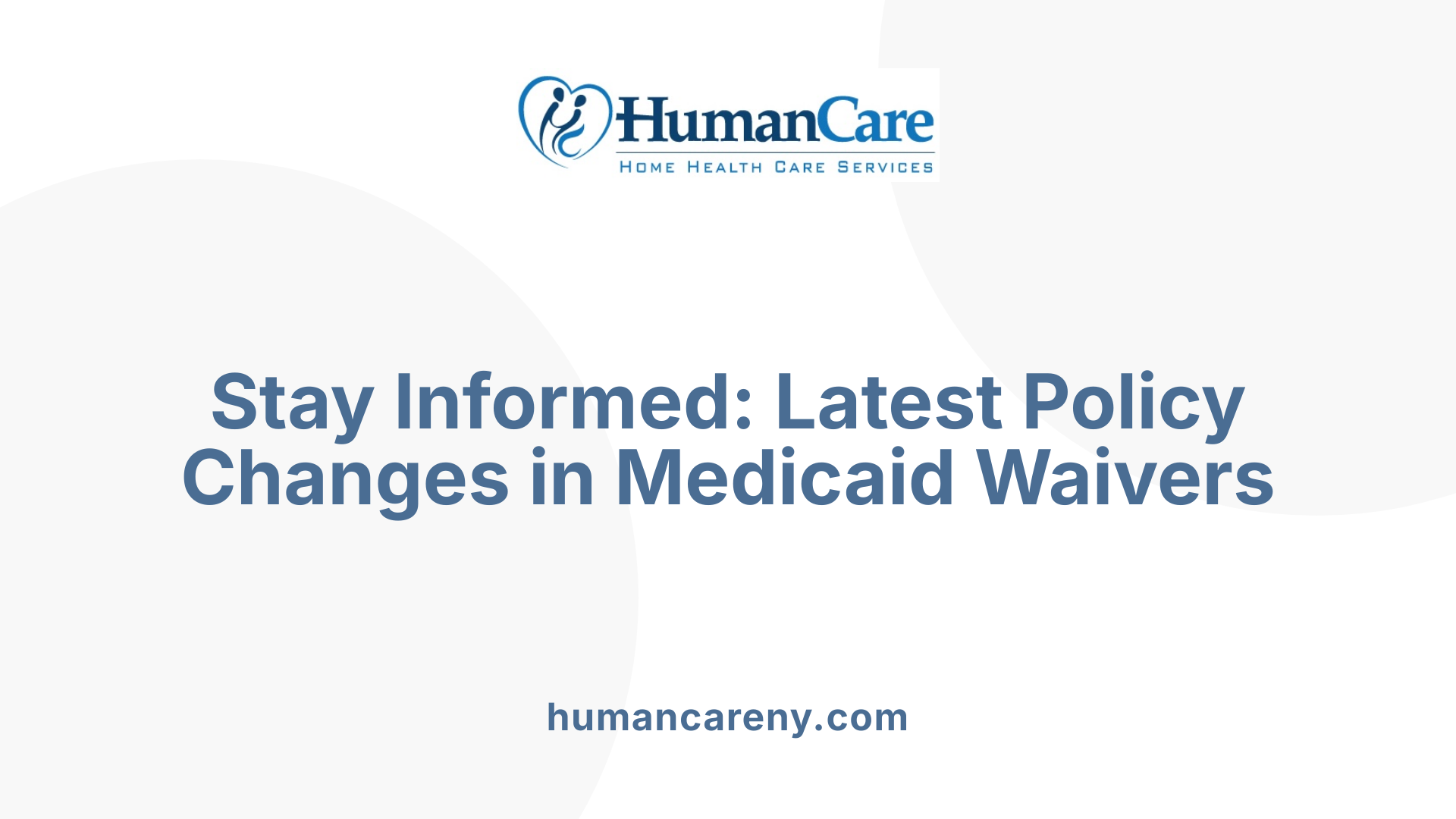
Are there any recent policy updates or explanations regarding Medicaid waivers for children and elderly adults?
Recent policy changes and updates concerning Medicaid waivers for children and elderly populations are continuously documented and shared through official channels such as state Medicaid offices, federal agencies, and program-specific resources.
For example, the MI Choice Waiver, which provides long-term care services for seniors and disabled individuals, saw revisions effective December 1, 2019. These updates included changes to intake procedures, participant materials, and compliance protocols, ensuring the program aligns with the latest federal guidelines and best practices. The renewal process of this waiver, approved in July 2019, integrated new policy standards that emphasize quality care, cost-effectiveness, and individualized care planning.
In addition, the broader Medicaid policy landscape is evolving through Section 1115 Demonstration waivers. These waivers allow states to pilot innovative models of care and coverage, which often include tailored approaches for children and elderly adults. Such reforms can expand or modify existing benefits, enhance care coordination, and encourage consumer-directed care options.
Almost every state actively participates in HCBS (Home and Community-Based Services) waivers, offering specialized services to eligible populations. Numerous updates are made regularly to reflect changes in eligibility criteria, service scope, and delivery methods. These updates aim to improve access, ensure affordability, and enhance the quality of care for vulnerable populations.
Overall, the landscape of Medicaid waivers remains dynamic, with ongoing adjustments designed to meet the changing needs of children and seniors, promote independence, and reduce reliance on institutional care. Stakeholders are encouraged to review official state and federal sources regularly to stay informed about the latest developments.
How to Determine Eligibility for Medicaid Waivers
How can I find out if I qualify for a Medicaid waiver?
To determine if you are eligible for a Medicaid waiver, start by reviewing your state's specific criteria. Each state develops its own waiver programs under federal guidelines, but common eligibility factors include demonstrating financial need, residency, and specific health or developmental needs.
Most waiver programs require participants to meet the state's level of care criteria for inpatient care, such as nursing home level of assistance. This means you must need substantial help with daily activities like bathing, dressing, or medication management.
Income eligibility is often set at up to 300% of the Federal Benefit Rate, with an asset limit, typically around $2,000. Income limits and asset requirements vary between states and programs.
A crucial step is an assessment process. You may need to undergo a functional evaluation conducted by a medical or health professional to verify your need for services. This assessment helps determine if your needs align with the waiver's target population.
Application procedures differ by state but generally include submitting documentation through online portals, mail, email, or fax. You’ll usually need to provide proof of income, residency, and medical or developmental diagnoses.
For children with developmental disabilities or special health needs, a diagnosis from a licensed professional, such as a psychologist or doctor, is often necessary.
Getting detailed, personalized information is essential. Contact your state's Medicaid agency or the specific division managing waiver programs. For instance, in Illinois, you might reach out to the Illinois Department of Healthcare and Family Services.
You can also consult online resources or search using phrases like 'Medicaid waiver qualification process' to find guides tailored to your state.
Remember, participation in a waiver program is not automatic even if you meet the criteria. There may be waiting lists or caps on enrollment.
In summary, the main steps involve verifying your income and assets, obtaining necessary medical or developmental diagnoses, undergoing a functional level of care assessment, and submitting your application through the proper channels.
These measures ensure that the program targets individuals who will most benefit from community-based care instead of institutionalization, supporting health, independence, and quality of life.
For detailed guidance specific to your state, visit your state Medicaid agency's website or speak with a Medicaid caseworker.
The Vital Role of Medicaid Waivers in Supporting Community-Based Care
Medicaid waiver programs are instrumental in enabling children and elderly adults with complex healthcare needs to live in their communities with dignity, independence, and access to essential services. By offering a broad range of individualized supports such as medical care, behavioral interventions, home modifications, and social services, these programs not only improve health outcomes but also foster social inclusion and reduce the financial and emotional burdens on families and caregivers. As policies evolve and more individuals become aware of their benefits, Medicaid waivers remain a cornerstone of modern healthcare systems aiming to deliver equitable, accessible, and person-centered care tailored to diverse needs across the lifespan.
References
- What is a Medicaid waiver program? Eligibility, rules, and more
- Medicaid Waivers & How They Help Seniors Live at Home
- Home & Community-Based Services 1915(c) - Medicaid
- [PDF] Medi-Cal Explained Fact Sheet: Medicaid Waivers in California
- What is Medicaid Home Care (HCBS)? - KFF
- California's Home and Community Based Alternatives Medicaid ...
- California Waiver Factsheet | Medicaid
- California - Kids' Waivers
- Federal Medicaid Cuts Would Force States To Eliminate Services for ...
- 10 Things to Know About Medicaid - KFF



